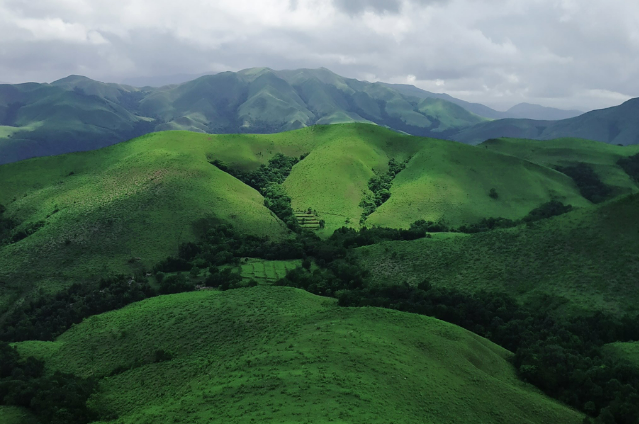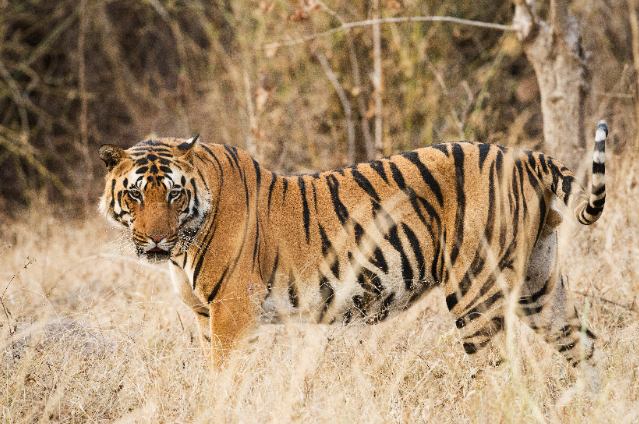India is celebrating seventy-five years of her liberation from the Neronian shackles of imperialism, and if one were to muse on her journey from one of the most abused lands on earth to one of the largest economies on earth, it is bound to be surprising. As we strive for a more prosperous future, the need for more resources of all kinds, be it land, water, or electricity, has been on an almost meteoric rise in recent times. Our country's burgeoning population of over a billion, and economy with a size of $3 trillion, need space for everything from homes and local shops to factories and SEZs. In a subcontinent that is already experiencing immense stress due to overexploitation of her natural wealth, the lungs of India, the forests, are now increasingly falling prey to humanity; in our pursuit of development, we have let down our unique biodiversity.
Our forests, ranging from the showery rainforests of the Western Ghats to the alpine woods of the Himalayas, are some of the most distinctive landscapes on earth, home to thousands of different animal and plant species, some of which are endemic to India. Historically, our woodlands were mostly secure from overexploitation, defended by cultural importance attributed to nature, and they were home to millions of India's Adivasis, tribes and people groups that held mutually beneficial relationships with their green abodes. Conservation of our woodlands has been recorded since the time of ancient emperors Ashoka and Chandragupta Maurya, and timeless practices such as sacred groves have protected our indigenous species. However, the fate of our forests was to change as the first British ships arrived on India's shores, and as their arrival under the guise of trade gradually spelled the subjugation of Indians for over two centuries, our woods were condemned to abuse.
India under colonial rule was used as nothing more than a source of raw materials in the commercial enterprise that was the British Empire, little regard was given to the special social and economic structures present in the region. Our wildlife, too, was condemned to this fate, as forests were no longer seen as an inalienable part of the landscape, but as prime sources of timber and other resources. Native trees were cut off to make way for monoculture plantations of sal and eucalyptus, devastating the fragile ecological balance of the area, and depriving many animals and bird species of their food and homes. India's majestic wildlife, such as the tiger, were hunted for sport by Europeans, giving little regard to the long-term consequences of the merciless killing of the forest's apex predator en masse.

Shola grasslands in Karnataka
Photo by Rahul on Unsplash
While the British left India in 1947, some of their attitudes and policies continue to mark a dark legacy in modern India, in which a civilization once known for its adoration and admiration for nature and wildlife is now destroying its nature. It is almost a regular occurrence today to see elephants and leopards wandering into villages and farms, posing a threat to both property and human life, but that is not because of any fault of their own but of us humans, who so mindlessly destroyed their habitats for the extension of our wealth and prosperity. Economic progress is essential for our future, but we as a nation must determine the cost that we are willing to pay for it, as every tree we cut today will only mean a more polluted and unpredictable tomorrow for humanity.
While the picture may seem completely bleak, it is not necessarily so. India has taken some remarkable steps since its independence to protect our forests and the wildlife that teems in them. Over 150,000 square kilometres of land in the country is classified as a protected area, where the Government, sometimes in partnership with local communities, uses woodlands for the in-situ conservation of our wildlife. National parks and wildlife reserves are aimed at the protection of fragile ecosystems from wide-ranging threats, such as deforestation, poaching, and illegal mining, while some reserves are dedicated to particular, endangered animal species, such as tiger and elephant reserves. These areas have provided a haven for many vulnerable plant and animal species to thrive, and an avenue for the public to celebrate the country's rich natural heritage.
No example can better illustrate the improving status of our wildlife conservation than the story of an animal almost emblematic of Indian culture, the Bengal tiger. In the early years of the twentieth century, it is believed over one lakh tigers roamed India's forests and grasslands, which plummeted to forty thousand by the time of independence, and just 1,411 in the year 2006. However, consistent conservation efforts and repopulation programs, such as Project Tiger, have resulted in the gradual and sustainable growth of the number of tigers, and their population in India is currently three-thousand strong.
It is clear that the state of our wildlife is neither hopeless nor is it rose-tinted. India is an industrializing nation, and it needs land and resources to uplift its underprivileged from poverty and aim for a better tomorrow. However, we must recognize that there is a delicate balance one must maintain, lest we would unleash unforeseen devastation upon ourselves and our successors; extreme weather events such as droughts, floods, and heatwaves induced by climate change have already shown us a glimpse of the deadly effects of tampering with our ecosystems. Our biosphere is an interconnected and interdependent network of thousands of species built to perfection over millions of years, and we must make sure our pursuit of prosperity must maintain the ecological balance of our forests and woodlands.

A tiger roaming in Ranthambore NP, Rajasthan
Photo by Vincent van Zalinge on Unsplash
India today stands proud of its rich cultural and natural heritage while working towards a thriving future for all Indians. As we stand in this critical juncture of transitioning into a new world with new challenges, including dealing with climate change and its effects on the planet, we must not forget the tenets of conservation and compassion towards nature that our country gave to the world. Biodiversity is not a hurdle to our progress, but essential to it, and our very existence.
'Earth provides enough to satisfy every man's needs, but not every man's greed.' - Mahatma Gandhi
